Several bird species share an instinct to share gifts with fellow birds and humans. Where this impulse originates remains under debate by scientists, but the behavior is undeniable.
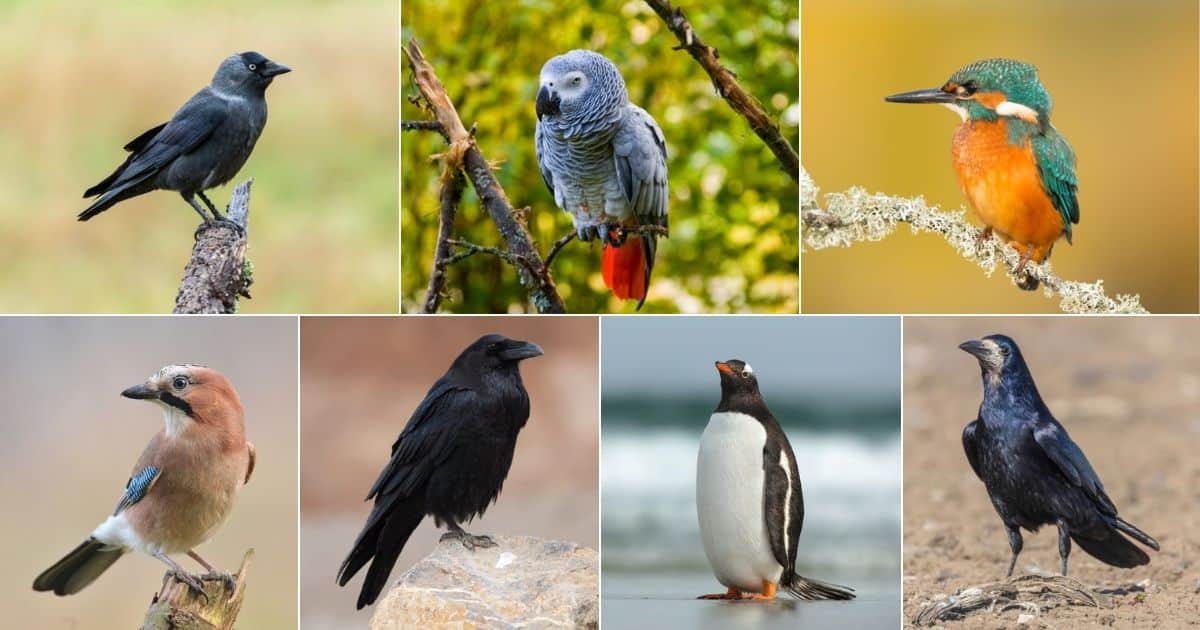
Some bird species famously share small gifts with humans, while others demonstrate gift-giving to their mates and fellow members of their species. Here are some of the most notable birds that bring gifts.
Contents
1. Crows
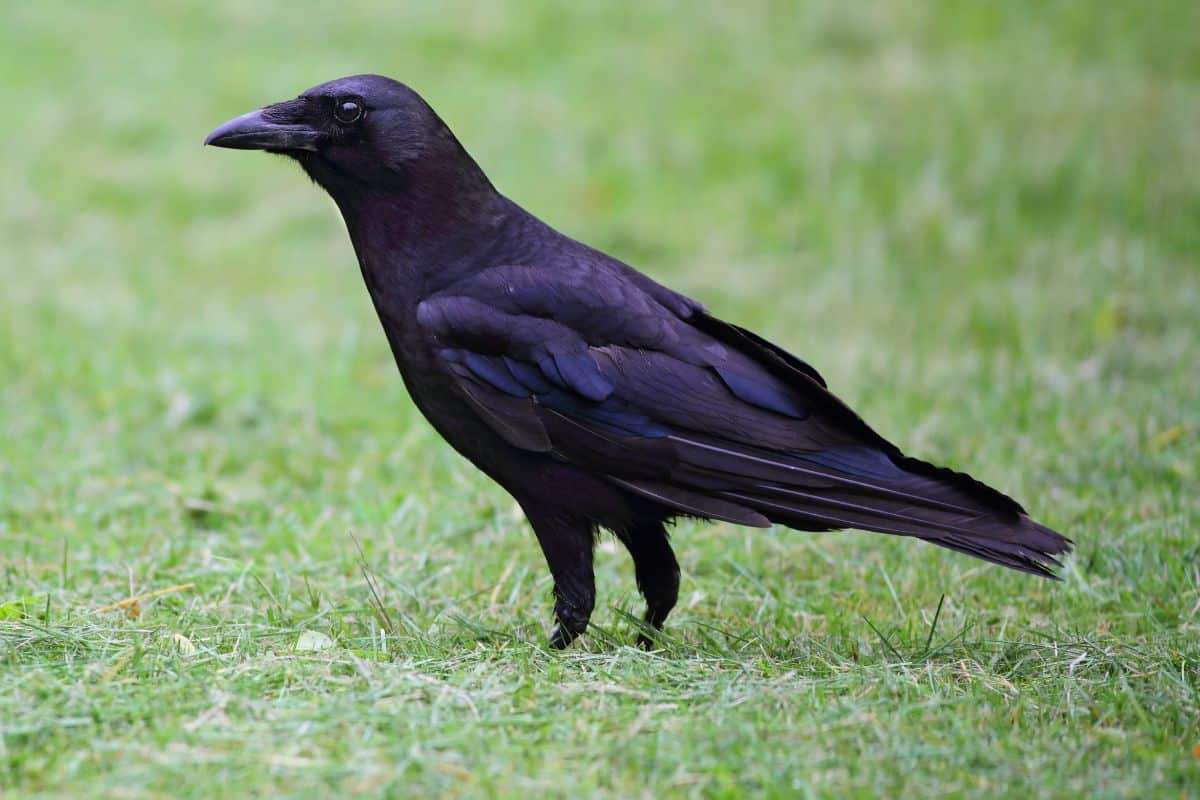
- Scientific name: Corvus brachyrhynchos
- Length: 15.8-20.9 in (40-53 cm)
- Weight: 11.2-21.9 oz (316-620 g)
- Wingspan: 33.5-39.4 in (85-100 cm)
Crows rank as the bird most notable for their habit of sharing small gifts with humans. Stories abound of scientists, small children, and ordinary folks of all kinds receiving tokens of appreciation from crows.
Crows are large birds with an all-over black color and a distinct voice. A crow’s “caw” pierces the air with its sharp sound. These corvids feature a large, sharp black beak and claws to help these animals eat garbage, pet food, and other random sources of food they can forage from the ground.
Do Crows Bring People Gifts?
Yes! Well-documented stories recount experiences of humans receiving small tokens from birds. Common gifts from crows include discarded earrings, tabs from soft drink cans, bones, pebbles, or other shiny objects viewed as treasures by these smart birds.
What Does It Mean When Crows Bring You Gifts?
Crows commonly bring people gifts to show gratitude for a source of food, shelter, or water. Because crows feed on the waste that others leave behind, people receive gifts from crows without doing anything intentionally.
2. Magpies
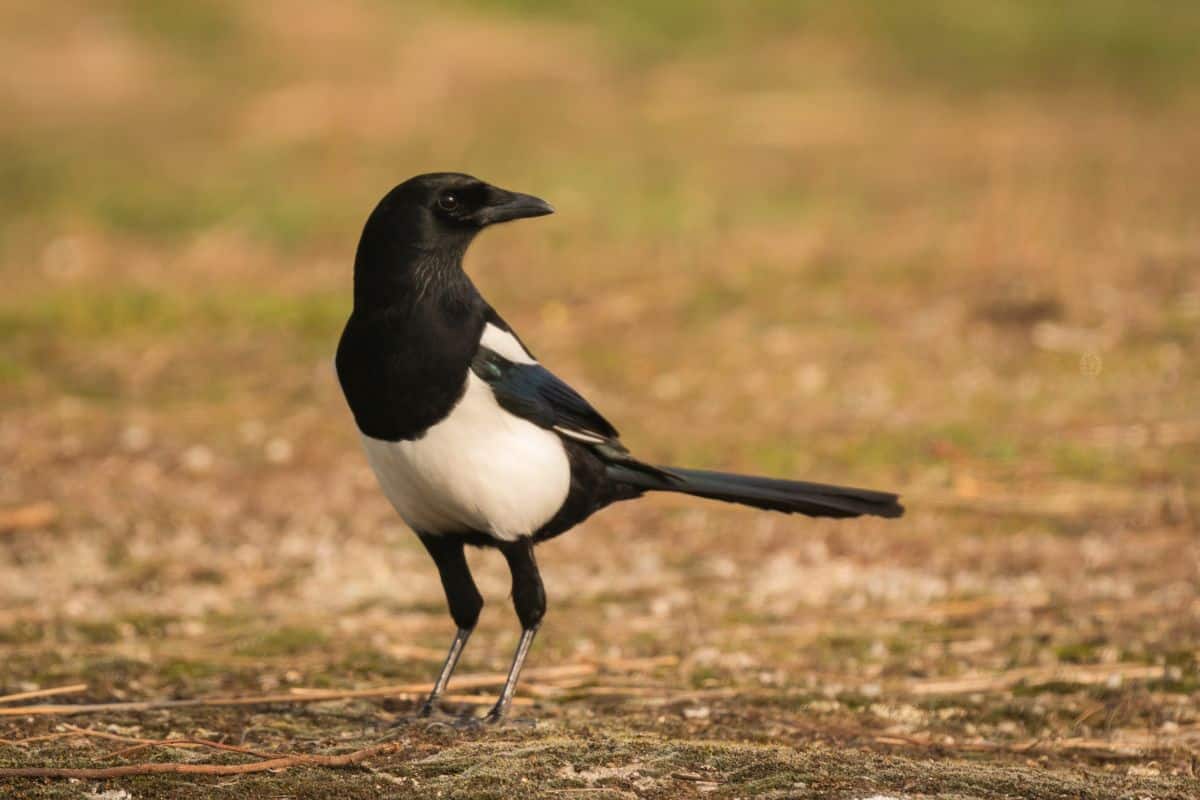
- Scientific name: Pica nuttalli
- Length: 16.9-21.3 in (43-54 cm)
- Weight: 5.3-6.0 oz (150-170 g)
- Wingspan: 24.0 in (61 cm)
Famous studies conclude magpies can recognize themselves in mirrors. These birds are well known for their voices and various bird songs.
This bird features two dominant color patterns. The Holarctic magpies are striking black and white birds with elongated tail feathers. The Oriental color pattern appears as the opposite, with vibrant green and blue hues.
Do Magpies Bring Gifts to Humans?
Yes! Magpies are another corvid, featuring similar traits of high intelligence and occasional gift-giving. These birds are extremely well-known for their voracious appetite for shiny objects. This fact can quickly shift a magpie from a delightful gift-giver to a thieving pest!
3. Ravens
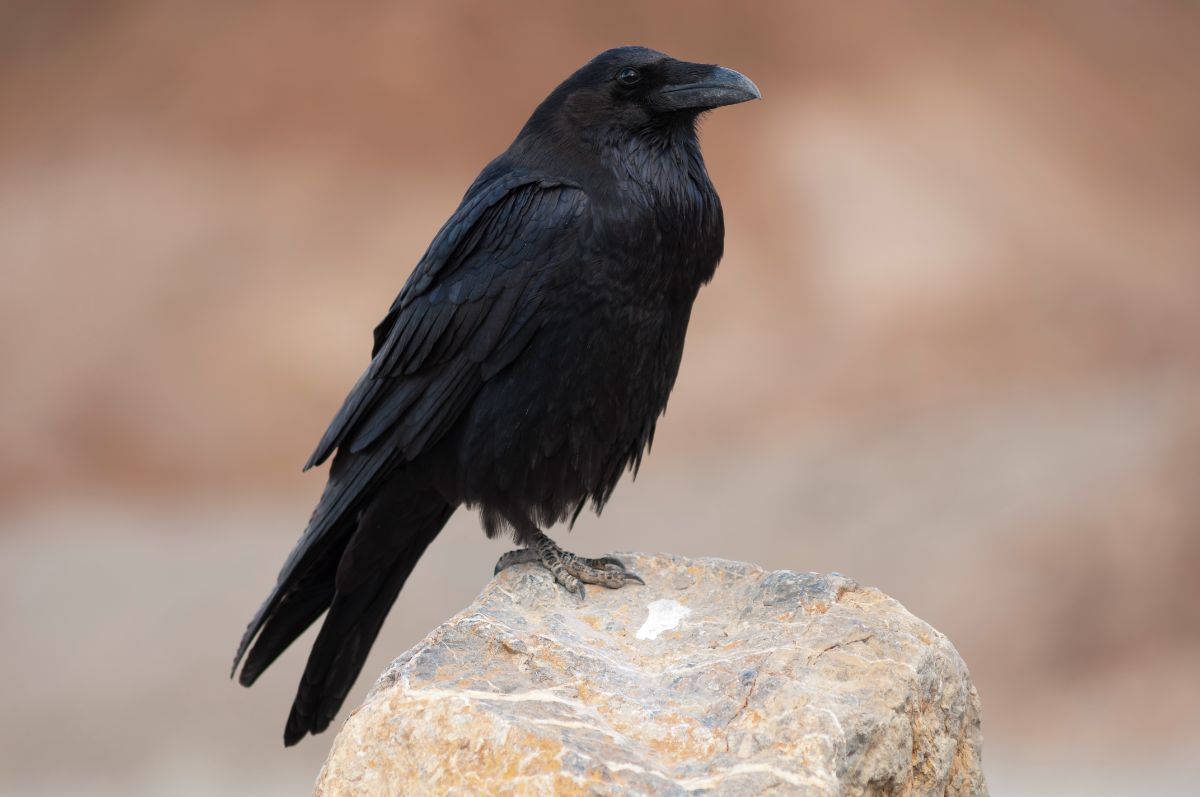
- Scientific name: Corvus corax
- Length: 22.1-27.2 in (56-69 cm)
- Weight: 24.3-57.3 oz (689-1625 g)
- Wingspan: 45.7-46.5 in (116-118 cm)
Ravens are large black birds, often mistaken for a crow. These two birds contain few exact distinctions but are categorized based on size.
Ravens often symbolize foreboding emotions or a funereal mood. However, these birds are ultra-intelligent and often make fast friends with humans.
Do Ravens Bring People Gifts?
Yes! As corvids, ravens are known to bestow gifts on people who they see as taking care of them. Ravens appreciate an ecosystem thriving with insects and a freshwater source, as well as treats like peanuts and seeds. Provide a compost heap or a ground feeder to encourage visits from nearby ravens.
4. Jackdaws
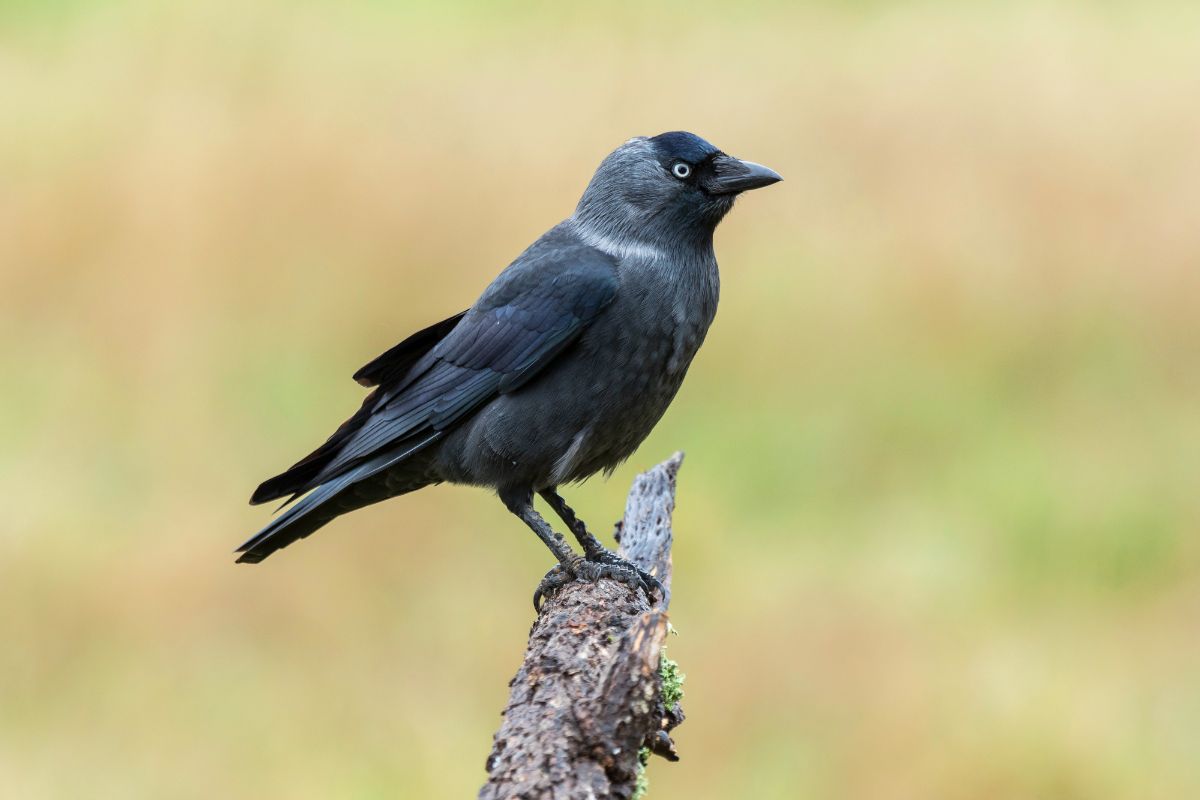
- Scientific name: Corvus monedula
- Length: 13 – 15 in (34–39 centimeters)
- Weight: 8.5 oz (240 grams)
- Wingspan: 27 in (70 cm)
Another lesser-known corvid species, jackdaws, maintain a reputation for making friends with humans. It is said jackdaws genuinely enjoy eye contact! Jackdaws look like smaller, plump crows with striking white eyes. You will also be able to tell jackdaws by their habit of traveling in groups instead of the more solitary crow.
Many historical accounts of jackdaws detail not only their penchant for sharing gifts of beloved shiny objects with humans but also genuine friendships developed with people.
5. Myna
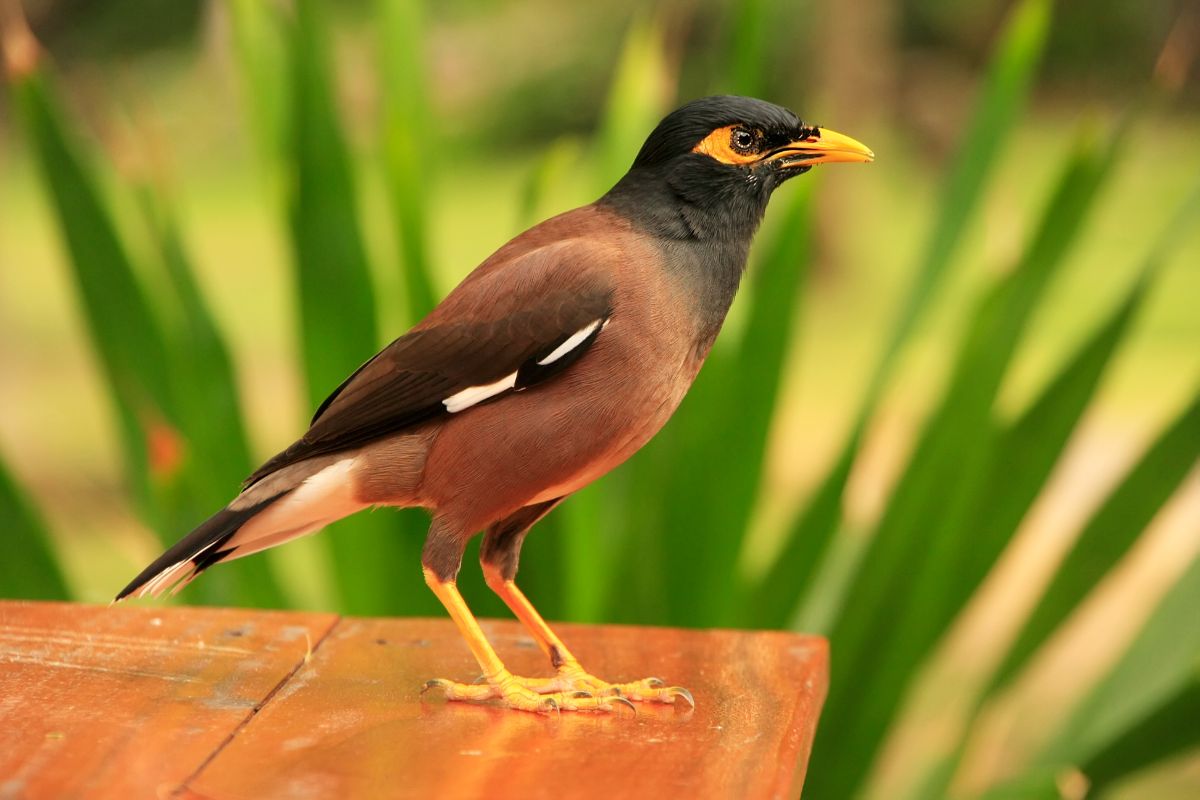
- Scientific name: Acridotheres tristis
- Length: 4 – 5 inch (23 – 26 cm)
- Weight: 2.8 – 5 oz (82 – 143 g)
- Wingspan: 12 – 14.2 inch (120 – 142 mm)
Myna birds originate from India and are in the starling family. These birds are extremely social and form close bonds with humans if kept as a pet. Mynas give gifts to their humans and can even faithfully imitate human speech from those they spend time around.
6. Jays
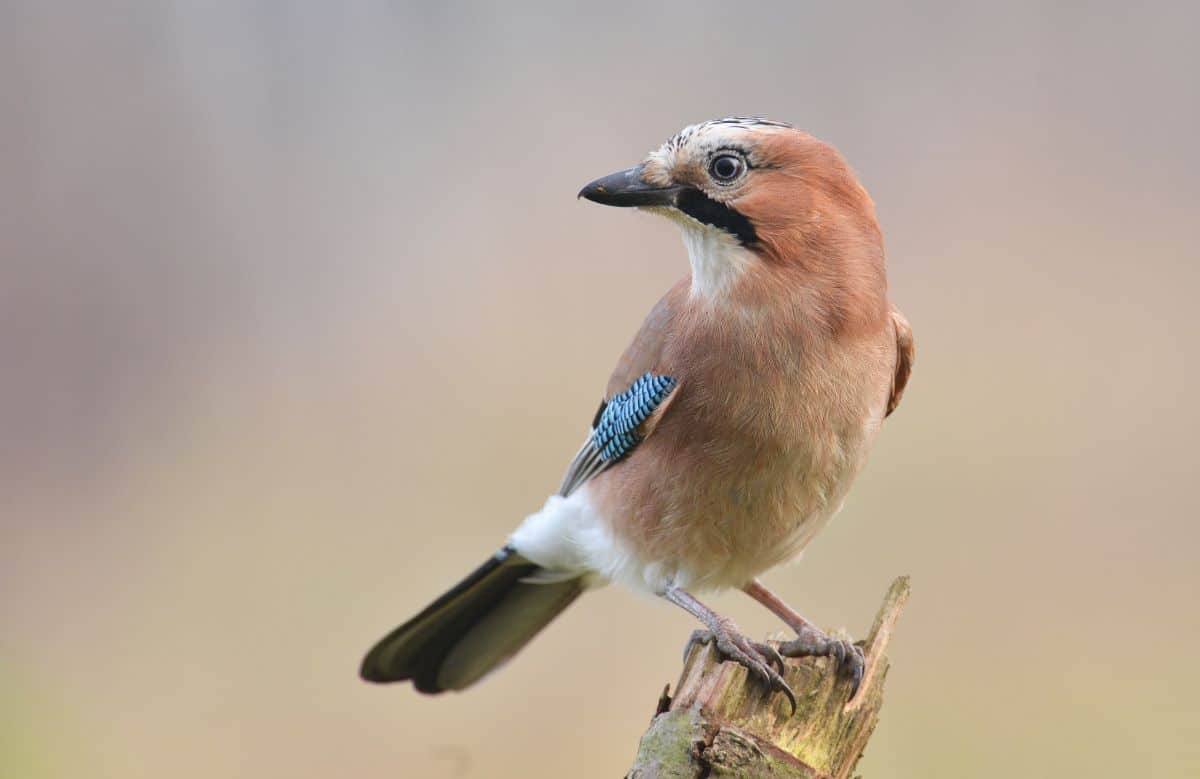
- Scientific name: Cyanocitta
- Length: 11.8-13.4 in (30-34 cm)
- Weight: 3.5-4.9 oz (100-140 g)
- Wingspan: 17.3 in (44 cm)
Jays are large corvid birds with distinctive screech. Many of these birds feature striking color patterns, often a bright blue and black scheme. Some jays’ heads have a large feather formation that sticks up when they are stimulated, called a crest.
Various jays live throughout the United States. The East Coast and Midwest host blue jays, while scrub jays and stellar jays make their home in Western states.
Jays also give gifts to prospective mates to help them stand out from the competition. Eurasian jays observe the preferred food preferences of their mates and share their food to maintain a healthy bond.
Do Blue Jays Leave Gifts?
While blue jays do not make friends with other birds, they do understand the value of leaving gifts for humans. Wires, pieces of plastic, bits of string, and other small tokens may be left behind by the blue jays that visit your yard.
7. Bowerbirds
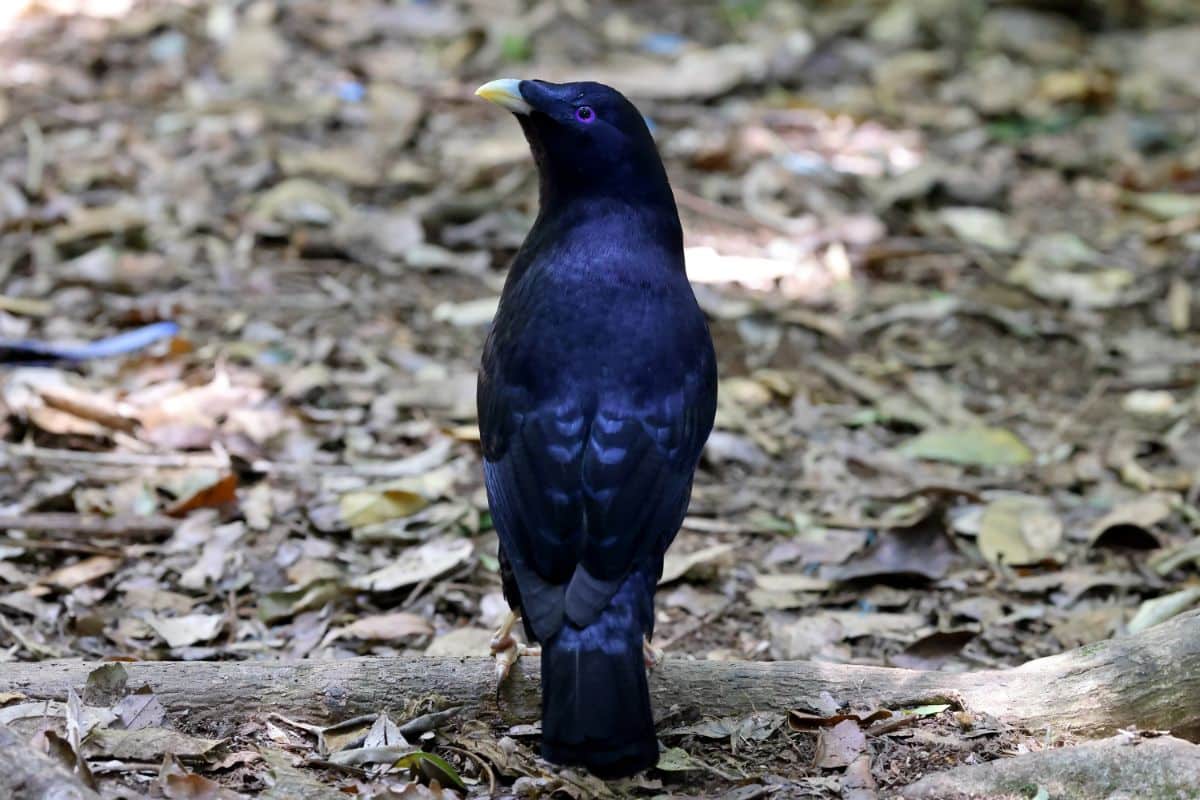
- Scientific name: Ptilonorhynchus violaceus
- Length: 18.5 – 201 inches (21 to 38 cm)
- Weight: 1 – 6 oz (70–230 g)
- Wingspan: 18 – 20 inch (45 – 50 cm)
Flamboyant bowerbirds are known for elaborate flirtation rituals, including giving gifts to potential mates. These vibrant birds use their bright red and yellow plumage paired with an ability to construct intricate, towering nests to meet their next partner.
Do Birds Give Each Other Gifts?
Yes! Several species of birds are identified as giving gifts to each other. Bowerbirds are well-known for this behavior, as well as parrots and penguins.
8. Kingfishers
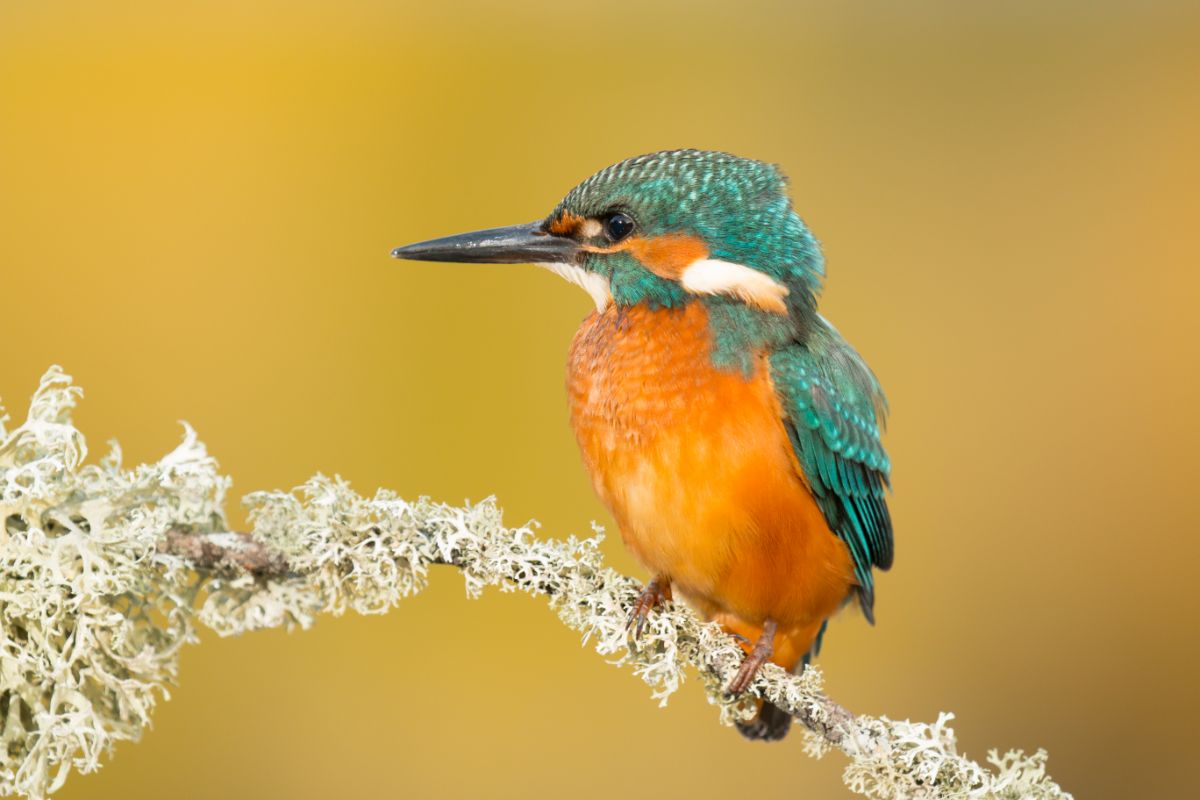
- Scientific name: Megaceryle alcyon
- Length: 11.0-13.8 in (28-35 cm)
- Weight: 4.9-6.0 oz (140-170 g)
- Wingspan: 18.9-22.8 in (48-58 cm)
Kingfishers are small, vibrantly-colored birds known for their impressive diving ability. The mesmerizing kingfisher also gives gifts to its partner as a “nuptial gift”.
These presents help reinforce the pair’s bond. Gifts of food, like dragonflies or other insects, demonstrate the male’s ability to provide for his partner and their future family.
9. Gentoo Penguins

- Scientific name: Pygoscelis Papua
- Length: 2.3 – 3.1 ft. (70 cm – 94 cm)
- Weight: 13 lbs (5.8 kgs)
- Wingspan: 8.7- 10 in (22.2 – 25.6cm)
Several different kinds of penguins demonstrate gift-giving behavior, often during the breeding season. Male penguins deliver their most prized pebbles to donate to the nest-making process, ensuring eggs can thrive above the mud and grime.
Like kingfishers, this is seen as a nuptial gift to maintain a strong bond between penguins. Gentoo penguins live exclusively in and near the South Pole, including on the continent of Antarctica and the Falkland Islands.
10. African Grey Parrots
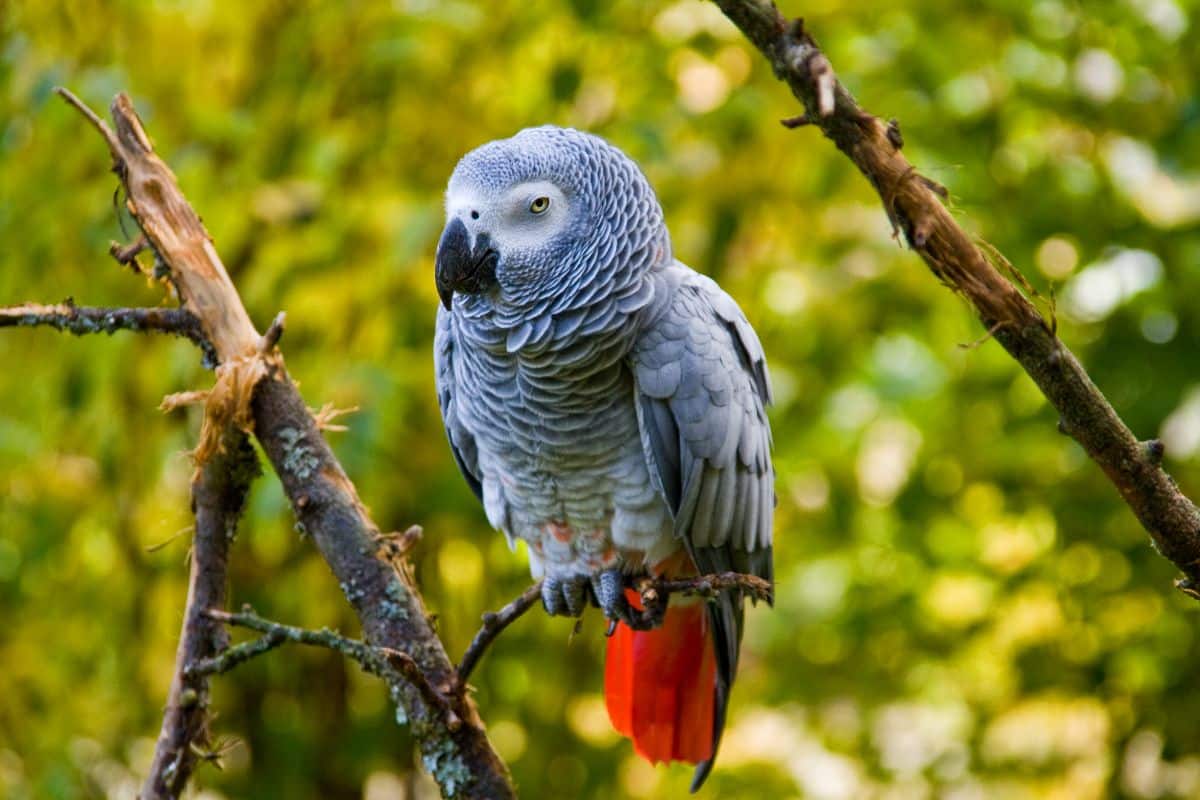
- Scientific name: Psittacus erithacus
- Length: 13 inches ( 33 cm)
- Weight: 14 oz (400 g)
- Wingspan: 18 – 20 inch (46 – 52 cm)
In a recent study, parrots have been observed trading metal rings for food, then sharing food with others without promising a subsequent reward. Parrots, tremendously friendly bird that makes terrific, long-living pets, give gifts to their human owners, mates, and their fellow bird friends. Parrots exhibit consistently generous behavior.
These parrots have been extensively hunted throughout Africa and are now a protected species.
11. Rooks
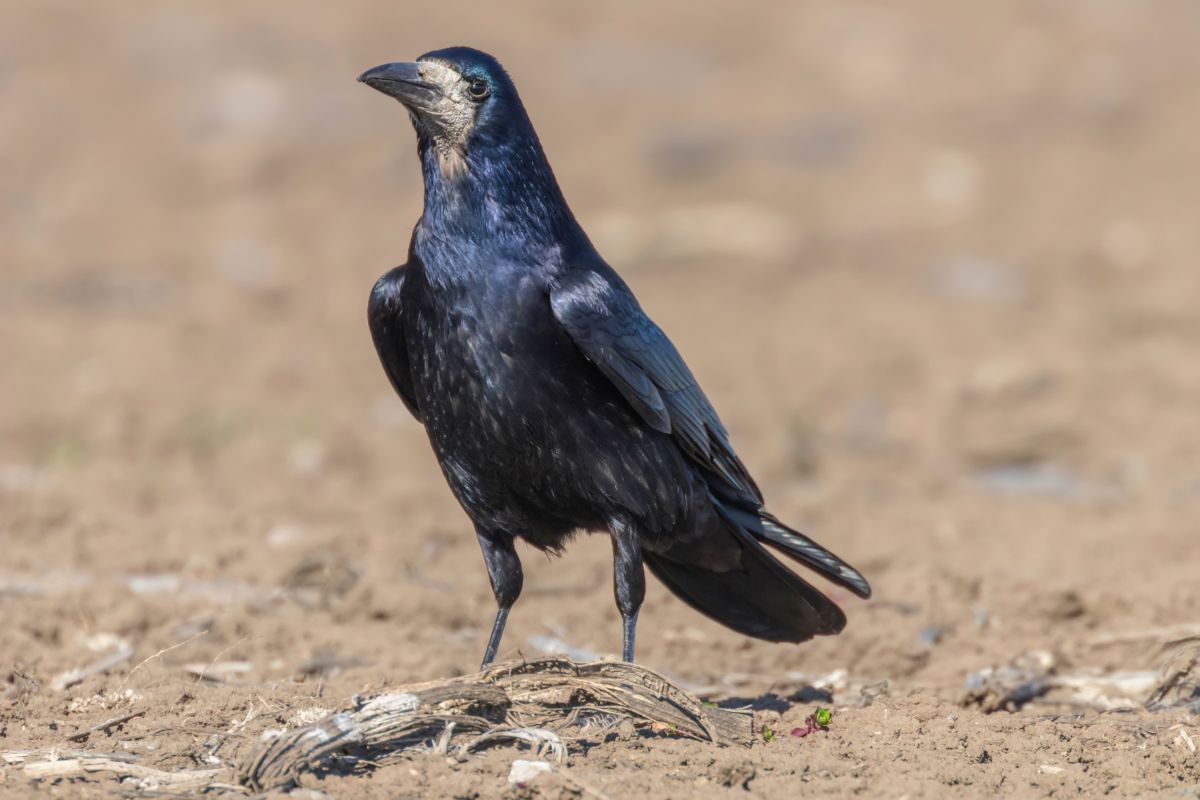
- Scientific name: Corvus frugilegus
- Length: 16.1 – 19.3 in (41 – 49 cm)
- Weight: 9.9 – 18.7 oz (280-530 g)
- Wingspan: 31.9 – 39 in (81 – 99 cm)
The last corvid on the list, rooks, resemble ravens and crows. However, they are distinct by their white faces. Rooks use tools in captivity and know how to work together to solve puzzles to receive rewards. These birds are friendly and generous creatures and live together in large groups of rooks and fellow corvids, the jackdaw.
While historically, rooks were seen as a pest and often hunted to keep them out of farmlands, today, rooks coexist peacefully with most humans.
Conclusion
There are so many birds that reward humans and their fellow birds with the exchange of gifts. Some scientists view this as learned behavior to manipulate others to achieve their needs. However, others choose to see the action of bringing gifts containing a deeper message of the desire to build community, even across species.
